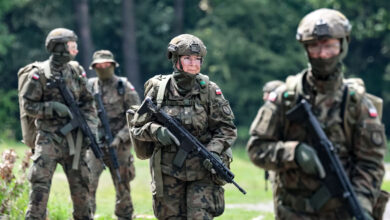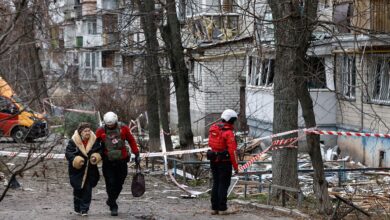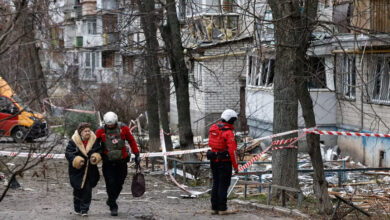
A climate march in Paris turned violent on Saturday when anarchist “black bloc” protesters joined and provoked clashes with police, prompting the rally’s organizers to call for demonstrators to leave the event.
After first marching with a separate yellow vest protest, around 1,000 of the hardcore radical demonstrators infiltrated the march against climate change where more than 150 were arrested, authorities said.
Two bank buildings were damaged in the clashes, along with motor scooters, windows and other property. Some activists built makeshift roadblocks which they then torched.
Some 7,500 police were deployed for the two protests, and they moved in quickly to target the hardline elements and dismantle the barricades, made from burning bins and construction materials. By 6:00 pm (1600 GMT) Saturday, police said they had arrested 163 people.
The climate march organizers urged protesters to go home to avoid the clashes, which involved teargas and baton charges.
Around 15,200 took part in the climate march, according to the independent Occurence consultancy, while organizers claimed 50,000 and the police put the number at 16,000.
‘This is hell’
The yellow vest movement erupted 10 months ago and blindsided President Emmanuel Macron, whom protesters accuse of being out of touch with the needs of ordinary French people.
“We are assembling just to say that we can’t make ends meet. (The protest) is not only against the president, it’s against the system,” said a female protester who did not give her name.
Others denounced what they said was overreach by security forces.
“This is hell. We’re fewer than 100, and police charge. That’s David versus Goliath,” said demonstrator Pierre, his eyes red with teargas.
The weekly demonstrations around France — Saturday was the 45th — prompted Macron to loosen the state’s purse strings to the tune of nearly 17 billion euros ($18.8 billion) in wage boosts and tax cuts for low earners.
They tapered off over the summer, and it remains to be seen whether the movement will regain the momentum of last winter and early spring, when the protests often descended into violent clashes with security forces, especially in Paris.
Macron had on Friday called for “calm”, saying that while “it’s good that people express themselves”, they should not disrupt the climate protest and cultural events also scheduled on Saturday.
The number of police deployed for Saturday’s rallies are on a par with the peak of the yellow vest protests in December and March.
A key figure in the yellow-vest movement, Jerome Rodrigues, had billed Saturday’s protest as “a revelatory demonstration”, claiming “many people are going to come to Paris”.
‘Treated like criminals’
Officials again outlawed protests on the Champs-Elysees avenue and other areas in the heart of the capital, where previously protesters had ransacked and set fire to luxury shops and restaurants during previous rallies.
Police on the Champs-Elysees used teargas and batons to scatter protesters who tried to violate the ban there.
Police headquarters said some of the protesters had carrying hammers and petrol canisters.
But one demonstrator, who identified herself only as Brigitte, said: “We are being treated like criminals.”
The police have been criticized for being heavy-handed in the clashes, not just with hardcore anti-capitalist “black bloc” groups blamed for much of the violence that has accompanied the demonstrations, but also with ordinary protesters.
A spokeswoman for one French climate campaigning group ANV-COP21, which describes itself as non-violent, denounced the police’s use of tear gas and stun grenades on peaceful marchers in the climate protest.
Greenpeace accused police of having done everything they could to interfere with their right to march.
Many Parisians were out in the streets Saturday for the annual European Heritage Days weekend, when public and private buildings normally off-limits to the public are opened to visitors.
After attracting 282,000 people nationwide on the first day of protests last November, yellow-vest protest participation had fallen sharply by the spring, and only sporadic protests were seen over the summer.
burs/jj/dl
Image: AFP / Lucas BARIOULET Police used teargas to scatter protesters




